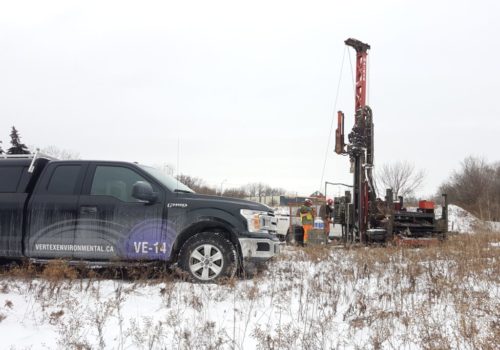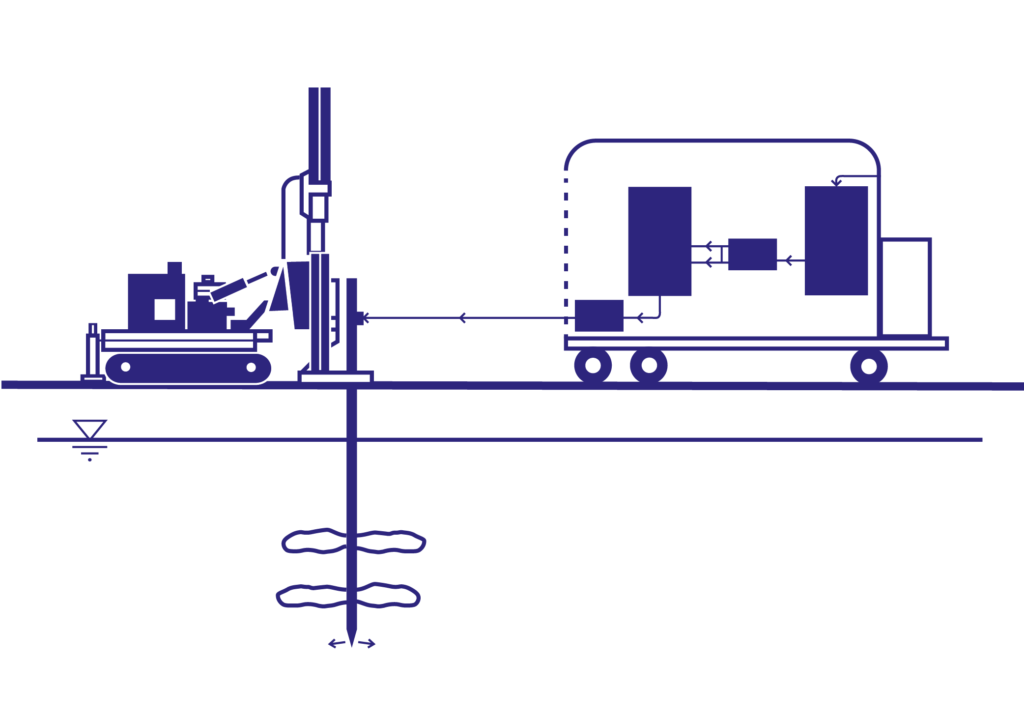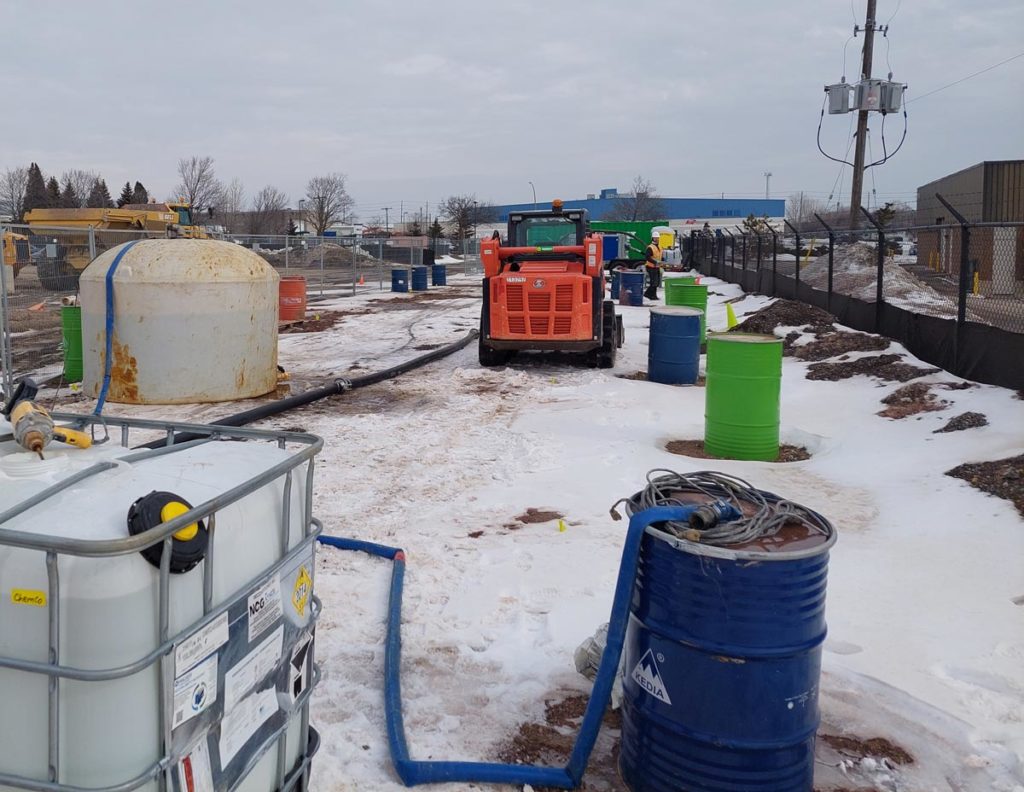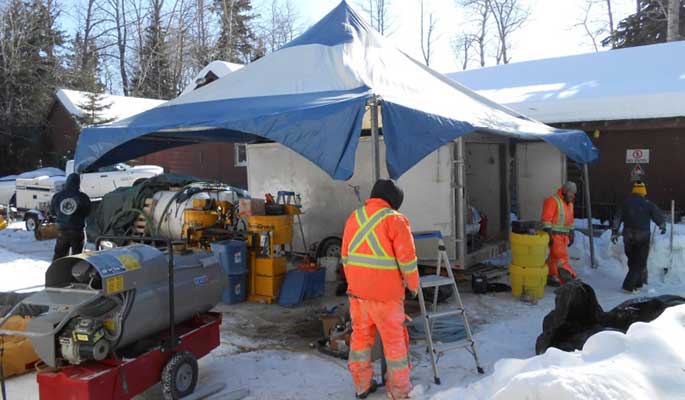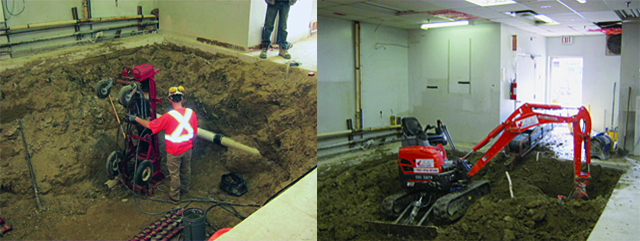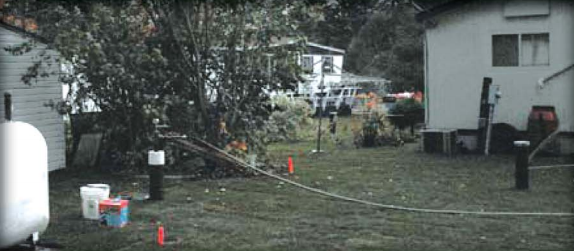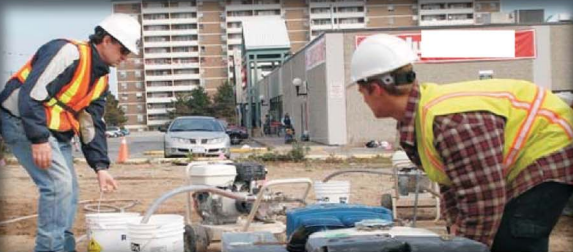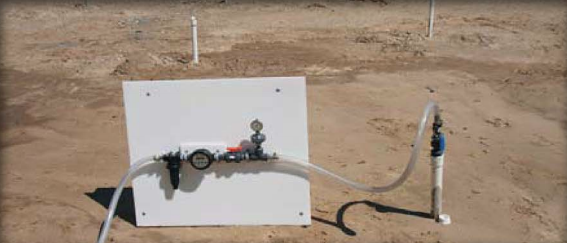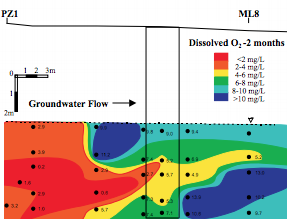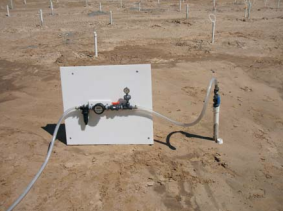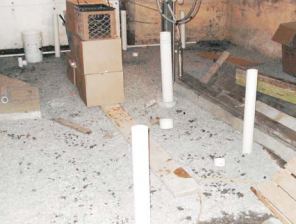
In-Situ Remediation
Using in-situ remediation techniques, contaminants are managed in place, under the ground, without needing to physically move the contaminated material. Typically various reagents are injected directly into the subsurface to react with the contaminants, neutralizing them and leaving harmless residuals.
Vertex can deploy an in-situ method to treat almost every type of contaminant. including petroleum hydrocarbons (gas stations and underground tanks), chlorinated solvents (dry cleaners and degreasers), nitrates, and many other compounds. We even have technologies to treat heavy metals in situ.
Maybe. We offer a wide range of approaches, and almost certainly can provide options to manage your contaminants in-situ. However, selection of the right approach involves understanding clients’ timelines and budgets, as well as factoring in contaminant concentrations, chemistry, site geology, any site limitations and the ultimate goals for the site.
Vertex is always at the ready to aid in site review and technology selection to design the best solution for the project.
To learn more about each method of in-situ remediation click on the headings in the section below.
In-Situ Methods
In-situ remediation consists of a variety of methods, each with their own benefits, limitations, and specifications. More information about each can be discovered by clicking on the headings below.
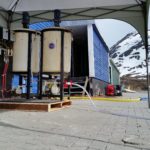
Chemical Oxidation
Powerful oxidizing agents insert electrons into contaminants in soil and groundwater, causing contaminants to break down into carbon dioxide, water, and other simple, less toxic compounds.
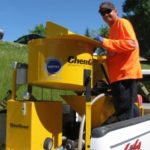
Chemical Reduction
Powerful reducing agents strip electrons from contaminants in soil and groundwater, causing contaminants to break down into carbon dioxide, water, and other simple, less toxic compounds.
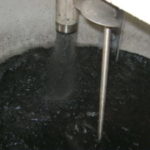
Trap & Treat®
Activated carbon based amendments (BOS 100 and BOS 200), adsorb or “trap” contaminants. These formulations contain active ingredients which continually act upon the trapped contaminants to break them or “treat” contaminants.
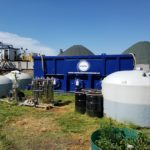
Enhanced Bioremediation
Microorganisms are nature’s design to degrade or metabolize contaminants in soil or groundwater. Soil conditions can be altered to encourage existing microbes to grow and feed on contamination. We can also supplement the existing populations by inoculating additional microbes into the soil.
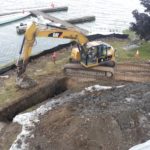
Permeable Reactive Barrier
These are constructed as a subsurface “wall” at a site to intercept and treat contaminated groundwater plumes. They are typically trenched in or emplaced using injection technologies.

Surfactants, Cosolvents, and Tracers
Many contaminants tend to “stick” to soil particles. Surfactants and co-solvents are used to transfer contaminants into groundwater (ie aqueous phase), or to mobilize contaminants out of unsaturated zones or fractures. Once contaminants are transferred into liquid phases, they can be extracted from the subsurface or more readily remediated in place.
Benefits of In-Situ
The use of in-situ remediation treatment methods have many benefits, including:
- Cost: More cost-effective than other methods – Up to 75% less expensive than excavation and off-site disposal
- Time: Faster and more effective than some other traditional remedial options, such as pump and treat
- Space: Takes up less space above ground while treating a larger sub-surface area
- Disruption: Considerably less disruptive to site operations – used in place of building demolition or foundation underpinning
- Sustainability: Lower carbon footprint and little secondary waste generated
- Health: Reduced risk of human exposure to contaminants
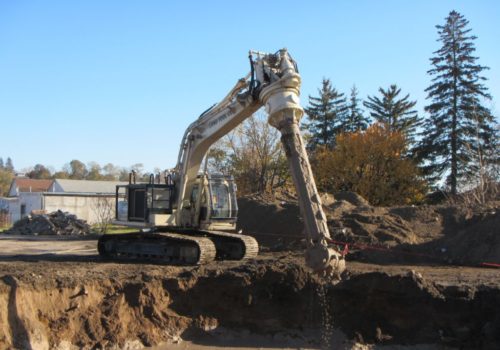
Tools & Experience
Vertex holds pre-approved mobile Environmental Compliance Approvals (ECAs) issued by the Ministry of Environment, Conservation and Parks. Having an appropriate ECAs is a legal requirement for anyone applying in-situ remediation technologies.
At Vertex we own a wide variety of equipment such as custom-built injection trailers. This provides flexibility and availability for our clients, allowing for reduced time and costs on projects.
Considered Canada’s leading in-situ remediation expert, Vertex has a team of experienced staff who have successfully completed over 1,000 in-situ remedial projects within various porous and fractured media including:
-
- Glacial tills (silts and clays),
- Fluvial deposits (sands and gravels),
- Fractured sedimentary bedrock (limestone and shale),
- Igneous bedrock (granite, shield).
